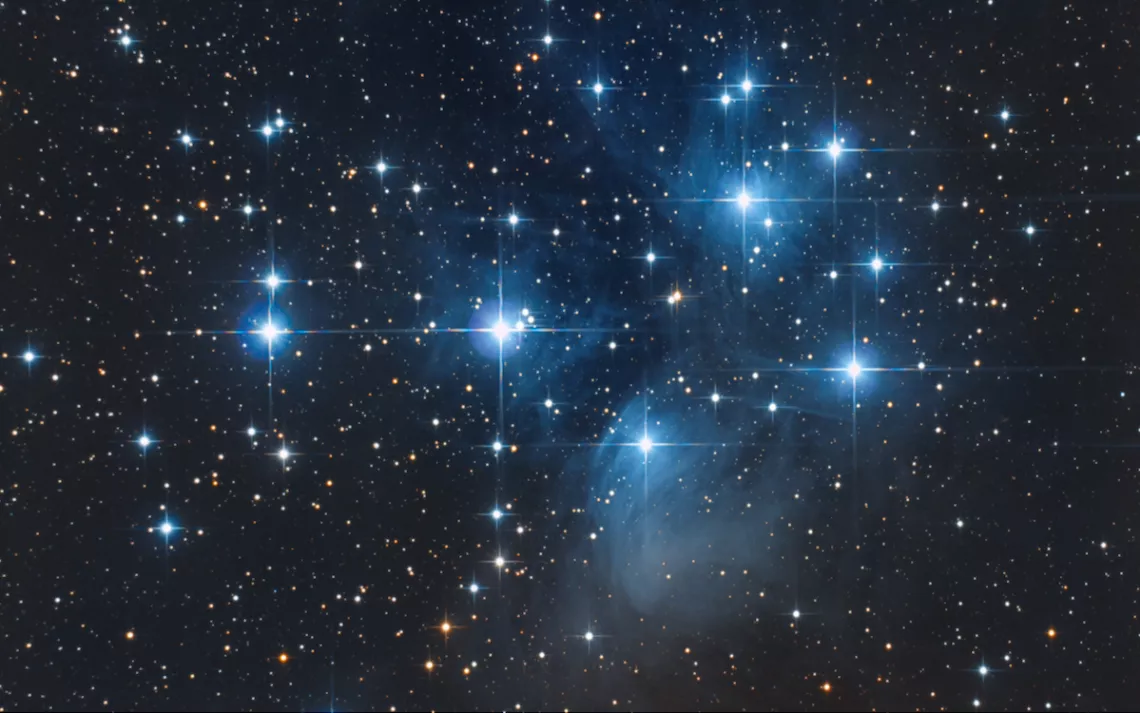October Astronomical Highlights: Orionid Meteors and the Pleiades
This month the sky is full of treats and some tricks

Photo by valeriopardi/iStock
The Orionid Meteor Shower lights up the skies in October, with up to 25 meteors an hour at its peak, which extends from October 20 to 27. However, the best time to observe the show (the peak of the peak, as it were) is overnight from October 21 to 22. The bits of dust that ignite the atmospheric streaks producing the Orionids were left behind from Halley’s Comet. The radiant, or plane, from which the meteors appear to emanate, lies to the left of Orion’s reddish star Betelgeuse and close to the border of Gemini. Orionids are some of the fastest known meteors—if you blink, you might miss one. With the full moon falling earlier in the month, viewers should get to enjoy a relatively dark sky.
For the second month in a row, the full moon falls on the 13th. The hunter’s moon in October will take place on a Sunday at 2:09 P.M. PDT, but it doesn’t rise until just after sunset. Look east to see the full moon ascending in the constellation Pisces. Some of the other, possibly more appropriate, names for October’s full moon are the blood moon or dying grass moon, which fit the Halloween and autumn season. Speaking of Halloween, those who are out trick-or-treating will hopefully be treated to a beautiful view as the sky grows dark—a crescent moon to the southwest, sitting next to Jupiter (the pair float almost 5 degrees apart on October 31) with a backdrop of the Milky Way.
October’s Planets
Halloween is not the only evening in October when the moon will be near Jupiter. On October 3, Jupiter and the moon will be less than 2 degrees apart. The moon will be a fat crescent on that night at 33 percent lit. The moon also has a close encounter with Saturn two nights later on October 5, during first quarter moon.
On October 28, a new moon means the sky will be nice and dark for the opposition of Uranus, which rises at sunset and sets at sunrise in the constellation Aries. At magnitude 5.7, it can be spotted with a pair of binoculars and possibly even without optical aid from a dark-sky site; the trick is knowing where to look. Uranus does not look much different from any random star. If you sketch the corner of the constellation Aries where it meets Pisces and Cetus from night to night, you will see one “star” slowly moving against a background of other stars, and that object is Uranus. The easiest way to find it, however, is to wait until it has a close pairing with a bright, well-known object. The next decent opportunity to see Uranus in this way is in March 2020.
Fall’s Star Cluster: The Pleiades
One favorite fall observing target is the Pleiades, a small star cluster in the constellation Taurus. The Pleiades looks best when viewed through binoculars; its large size cannot be completely captured in a telescope. Without any optical aid, you’ll first notice the Pleiades as a fuzzy patch of stars in the east after it gets dark. The shape is reminiscent of a little dipper.
The Pleiades is also known as the “seven sisters,” six of which are easily visible without optical aid. Under the right conditions, magnification will suddenly increase the number of stars visible from a few hundred to more than a thousand. The stars in the Pleiades cluster were born together about 100 million years ago, and the grouping itself lies about 440 light-years away.
 The Magazine of The Sierra Club
The Magazine of The Sierra Club







